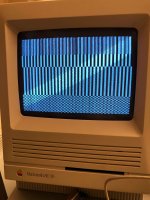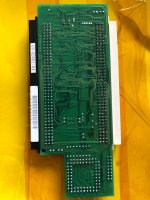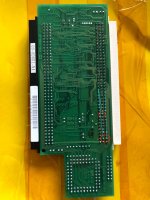BadGoldEagle
Well-known member
Yep, apparently my Maccon died.
I can't see any damaged traces/chips (apart from the ones which were cut from the factory...) but perhaps I missed one?
Here's what I get on the display. (FYI, nothing else's plugged in, just the card without its daughterboard. SE/30 works otherwise well.)

Here are some pictures of the board.


Any help appreciated :-/
Thanks
I can't see any damaged traces/chips (apart from the ones which were cut from the factory...) but perhaps I missed one?
Here's what I get on the display. (FYI, nothing else's plugged in, just the card without its daughterboard. SE/30 works otherwise well.)

Here are some pictures of the board.


Any help appreciated :-/
Thanks


